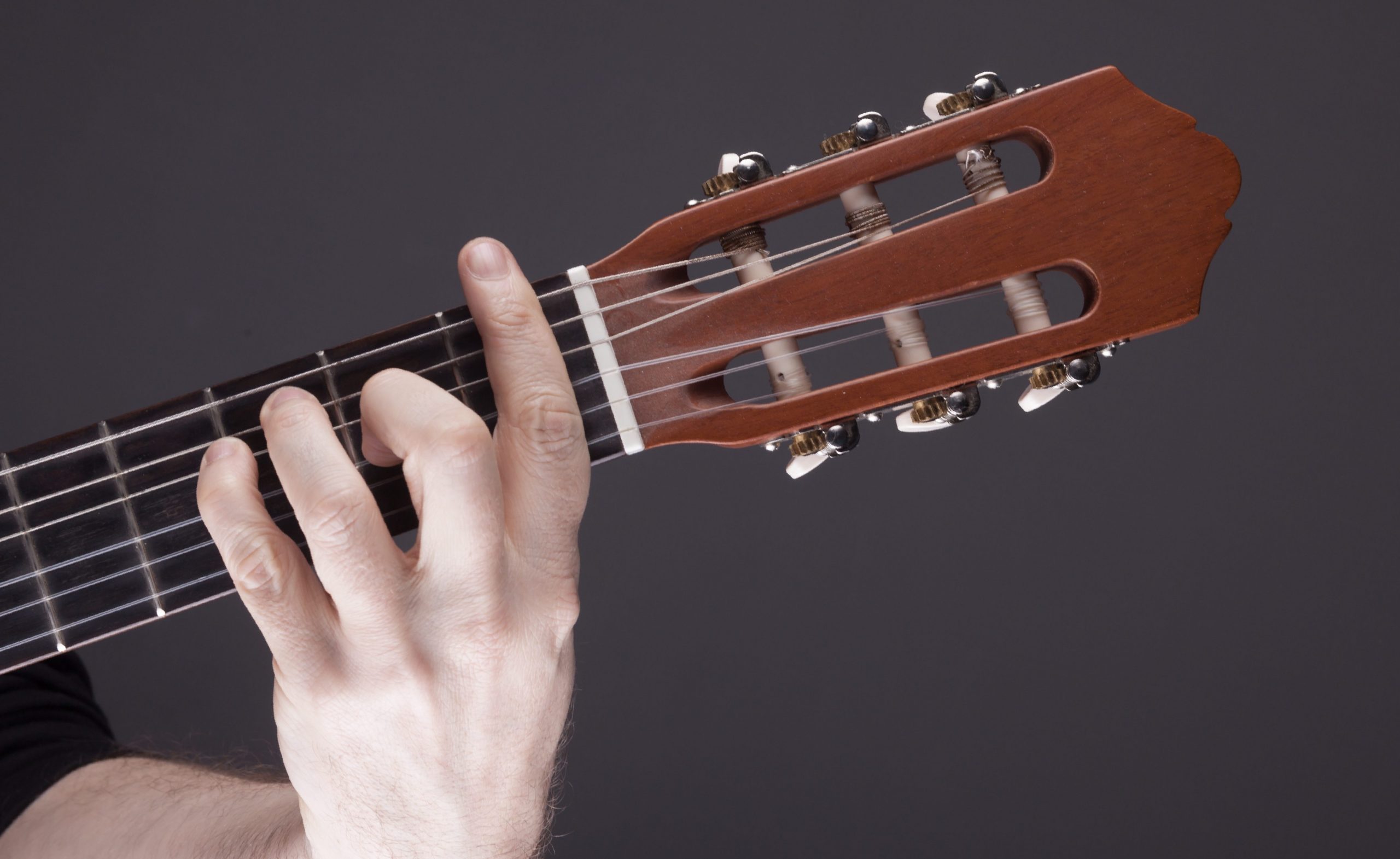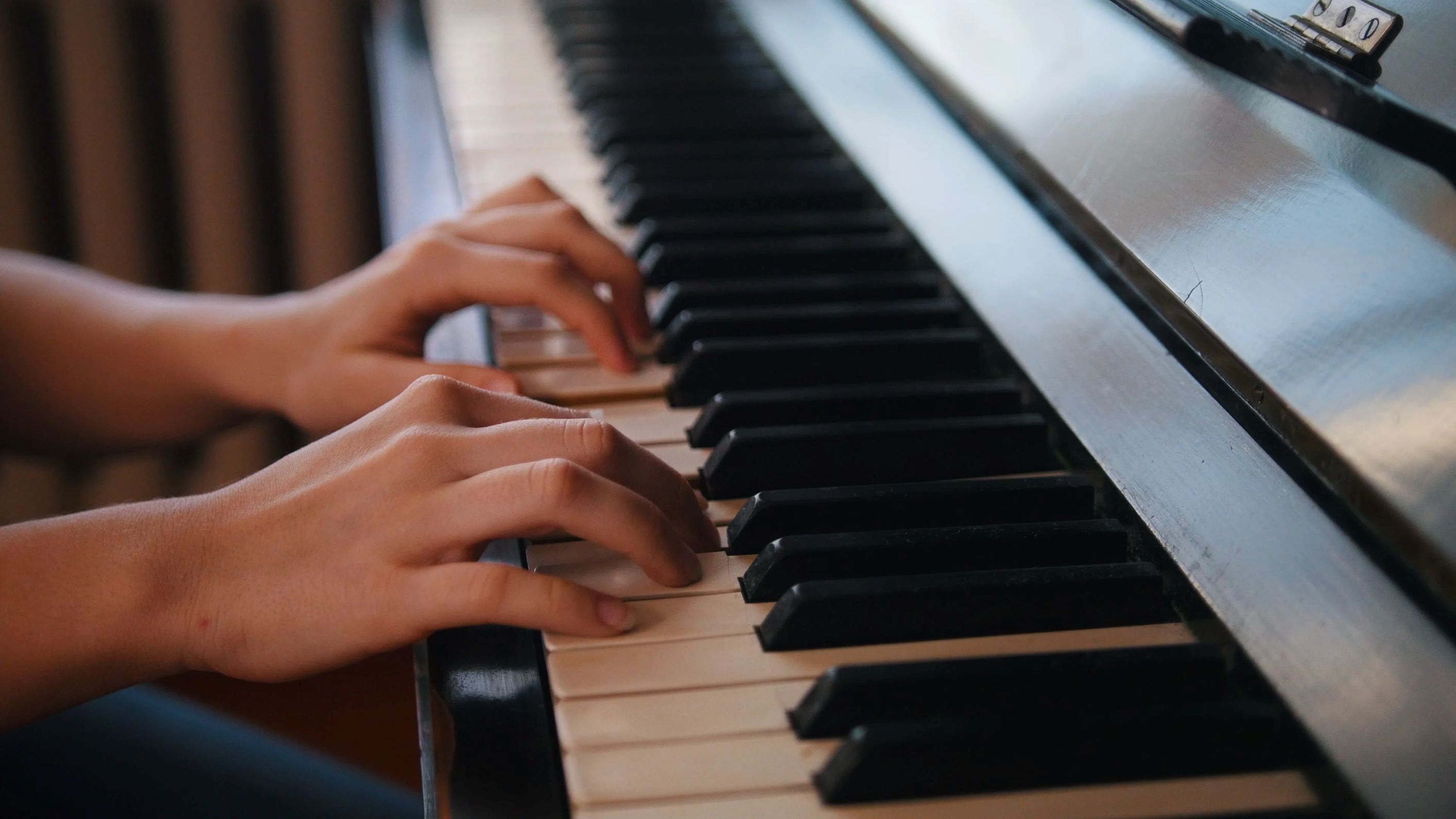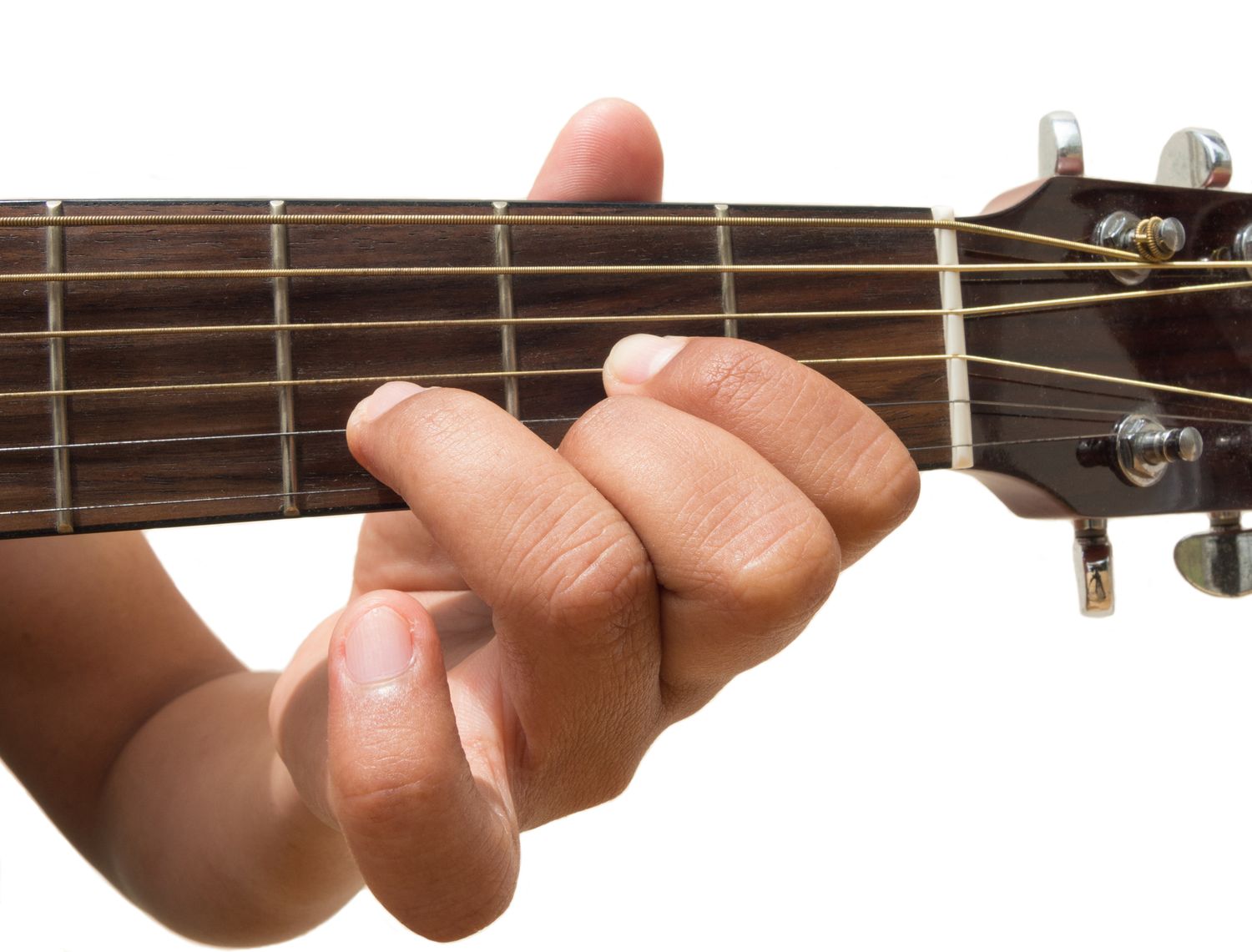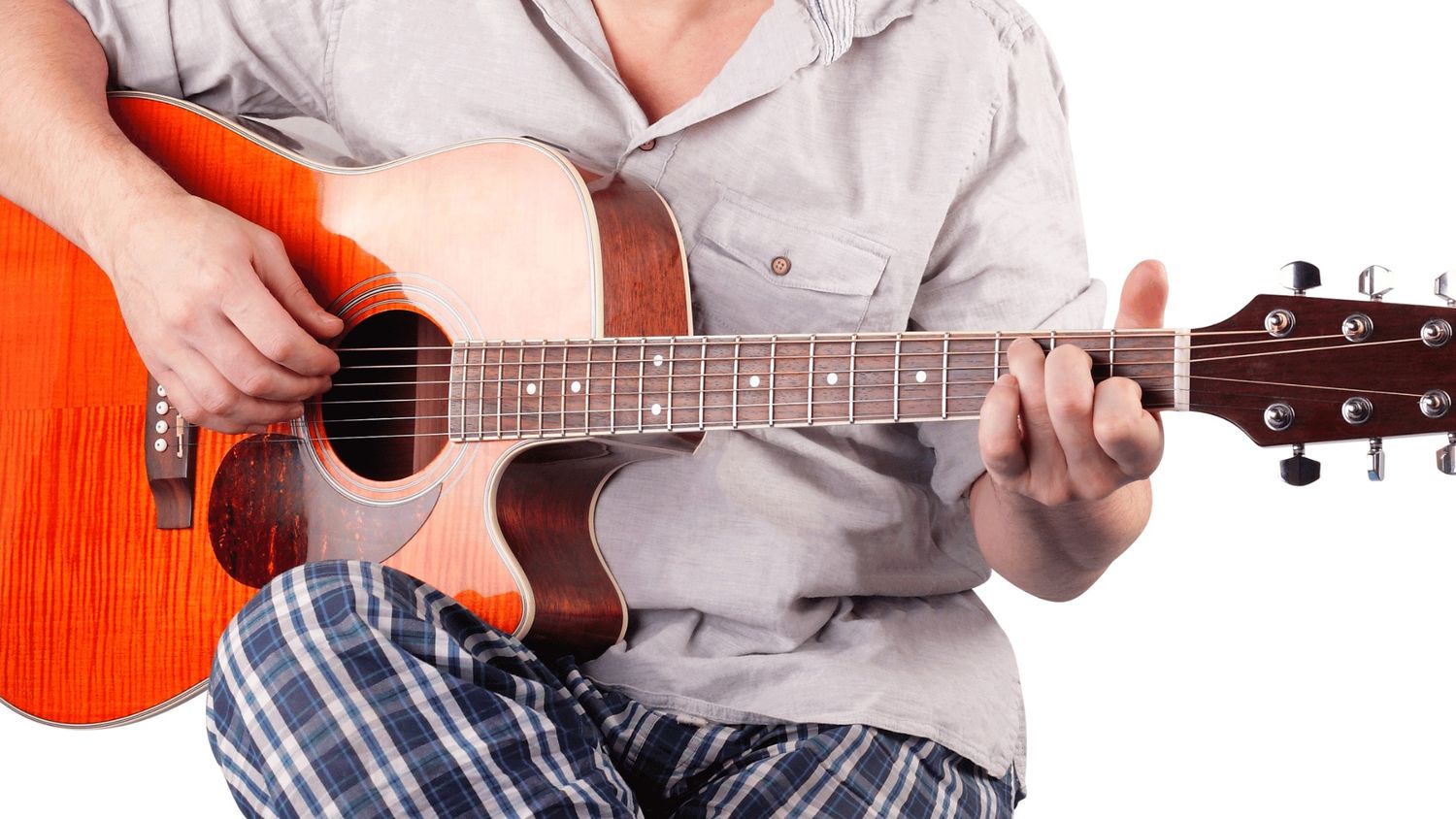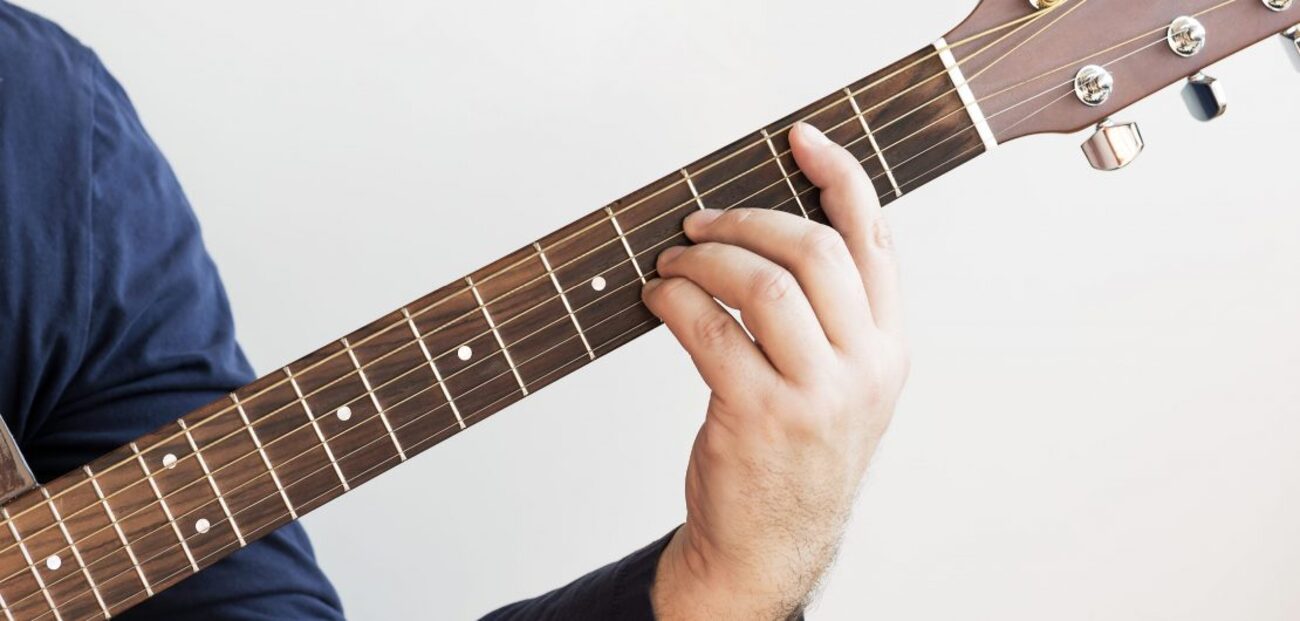Home>Instruments>Piano>How To Play Chords On Piano


Piano
How To Play Chords On Piano
Published: February 11, 2024
Learn how to play chords on the piano with our step-by-step guide. Master the basics and start creating beautiful music today!
(Many of the links in this article redirect to a specific reviewed product. Your purchase of these products through affiliate links helps to generate commission for AudioLover.com, at no extra cost. Learn more)
Table of Contents
Introduction
Playing the piano is a beautiful and fulfilling experience. Whether you're a beginner or an experienced pianist, understanding how to play chords on the piano can significantly enhance your musical journey. Chords form the foundation of many songs and compositions, and mastering them opens up a world of musical possibilities. In this article, we will delve into the art of playing chords on the piano, exploring the fundamental concepts, basic major and minor chords, techniques for playing chords, common chord progressions, and valuable tips for improving your chord-playing skills.
Understanding and mastering chords is essential for any pianist looking to expand their repertoire and musical proficiency. By learning how to play chords effectively, you can accompany singers, play in bands, and even compose your own music. Whether you aspire to play classical masterpieces, jazz standards, or contemporary pop songs, a solid grasp of chords will empower you to bring these musical genres to life on the piano.
The journey to mastering piano chords may seem daunting at first, but with dedication, practice, and the right guidance, you can make significant strides in your musical abilities. Throughout this article, we will provide comprehensive insights, practical tips, and valuable resources to help you navigate the fascinating world of piano chords with confidence and proficiency.
So, let's embark on this musical odyssey together, as we unravel the art of playing chords on the piano and equip ourselves with the knowledge and skills to create captivating and harmonious melodies. Whether you're seated at a grand piano in a concert hall or at a compact keyboard in the comfort of your home, the principles of chord playing remain constant, offering endless opportunities for musical expression and creativity.
Understanding Chords
Before delving into the intricacies of playing chords on the piano, it’s essential to grasp the fundamental concept of what chords are and how they function within music. In music theory, a chord is a set of three or more notes played simultaneously, creating a harmonious sound. These notes typically consist of a root note, a third, and a fifth, forming the basic structure of a chord. Understanding the relationship between these notes is crucial for constructing and playing chords effectively.
Chords are the building blocks of harmony in music, providing depth, emotion, and color to musical compositions. They serve as the harmonic foundation, supporting melodies and creating rich, expressive soundscapes. Each chord has its own unique sound and emotional quality, evoking different moods and atmospheres. By understanding the characteristics of various chords, pianists can infuse their playing with nuance and sensitivity, adding depth and dimension to their musical interpretations.
Furthermore, chords are classified based on their intervals and the relationships between their constituent notes. Common types of chords include major chords, minor chords, diminished chords, and augmented chords, each with its distinct sound and character. Understanding the differences between these chord types is essential for interpreting and playing a diverse range of musical pieces.
As pianists delve deeper into the world of chords, they encounter extended chords, such as seventh chords, ninth chords, and eleventh chords, which introduce additional notes and complexities to harmonic structures. These extended chords contribute to the richness and sophistication of musical arrangements, offering endless possibilities for creative expression and artistic interpretation.
By gaining a thorough understanding of chords and their properties, pianists can elevate their playing to new heights, infusing their performances with depth, emotion, and musicality. As we proceed, we will explore the specific types of chords and their unique characteristics, providing insights into how these chords can be effectively applied in piano playing and musical composition.
Basic Major and Minor Chords
Major and minor chords form the bedrock of harmonic structure in music, and they play a pivotal role in piano playing. Understanding the differences between these two chord types is essential for pianists aiming to convey varying emotions and tonalities through their music.
Major Chords: A major chord is constructed from a root note, a major third, and a perfect fifth. This combination produces a bright, uplifting sound, often associated with feelings of joy, triumph, and optimism. Major chords are prevalent in a wide array of musical genres, from classical compositions to contemporary pop songs, and mastering their execution is fundamental for any pianist.
Minor Chords: In contrast, a minor chord consists of a root note, a minor third, and a perfect fifth. This configuration yields a more subdued, melancholic sound, evoking emotions of introspection, longing, and introspective depth. Minor chords are integral to conveying poignant and emotive musical expressions, adding complexity and nuance to compositions.
As pianists familiarize themselves with major and minor chords, they develop a keen sensitivity to the emotional nuances conveyed by each chord type. This awareness enables them to imbue their performances with a rich tapestry of feelings, captivating audiences and eliciting profound emotional responses through their music.
Mastering the execution of major and minor chords on the piano is a foundational skill that opens the door to a vast repertoire of musical pieces. Whether interpreting classical sonatas, jazz standards, or contemporary ballads, the ability to fluidly transition between major and minor chords is essential for delivering compelling and evocative performances.
Throughout this article, we will delve deeper into the practical techniques for playing major and minor chords on the piano, providing valuable insights and exercises to help pianists hone their skills and infuse their playing with expressive depth and resonance.
Playing Chords on the Piano
When it comes to playing chords on the piano, mastering proper technique and hand positioning is crucial for achieving clarity, precision, and expressive depth in your musical performances. Whether you’re a novice or seasoned pianist, developing a nuanced approach to playing chords enhances the overall quality of your sound and allows for seamless integration of harmonies into your playing.
Hand Positioning: Proper hand positioning is essential for navigating chords on the piano. When playing chords, ensure that your fingers are arched and positioned squarely over the keys, allowing for optimal control and dexterity. Maintaining a relaxed yet firm hand posture facilitates smooth transitions between chords and minimizes strain during extended playing sessions.
Finger Independence: Cultivating finger independence is vital for executing chords with precision. Pianists should practice exercises that focus on strengthening individual fingers and improving coordination, enabling them to play complex chord voicings and progressions with fluency and accuracy.
Chord Inversions: Exploring chord inversions enriches your playing by offering alternative voicings that create a more varied and dynamic sound. By practicing inversions, pianists can fluidly transition between chords while maintaining a smooth and connected musical flow, adding depth and sophistication to their interpretations.
Dynamic Expression: Incorporating dynamic expression into chord playing elevates the musical narrative, allowing for nuanced variations in volume and intensity. By mastering the art of dynamic control, pianists can infuse their chord progressions with emotive power, shaping the musical phrases to convey a range of emotions and moods.
Additionally, understanding the concept of voicing and the distribution of notes within a chord across different octaves empowers pianists to craft rich, resonant harmonies that resonate beautifully throughout the piano’s register. By experimenting with various voicings and exploring the sonic possibilities of different chord configurations, pianists can imbue their playing with depth, complexity, and expressive character.
As we delve into the practical aspects of playing chords on the piano, we will explore exercises, techniques, and strategies to help pianists refine their chord-playing skills, unlocking new levels of musical expression and artistry.
Common Chord Progressions
Chord progressions form the backbone of countless musical compositions, providing a roadmap for harmonic movement and lending a sense of structure and continuity to music. Understanding common chord progressions is essential for pianists seeking to expand their repertoire and interpret a diverse range of musical genres with confidence and proficiency.
I-IV-V-I Progression: This classic chord progression, prevalent in various musical styles, follows the sequence of the tonic (I), subdominant (IV), dominant (V), and resolves back to the tonic (I). The I-IV-V-I progression embodies a sense of resolution and closure, serving as a foundational framework for countless melodies and compositions.
vi-IV-I-V Progression: Widely employed in pop, rock, and contemporary music, the vi-IV-I-V progression offers a versatile and emotive harmonic sequence. This progression, often associated with uplifting and anthemic qualities, provides a compelling backdrop for expressive and memorable melodies.
ii-V-I Progression: Commonly found in jazz and traditional standards, the ii-V-I progression showcases the interplay between the supertonic (ii), dominant (V), and tonic (I) chords. This progression exudes a sense of harmonic sophistication and serves as a cornerstone of jazz improvisation and melodic development.
By familiarizing themselves with these and other common chord progressions, pianists can navigate a vast array of musical compositions with fluency and insight, enriching their interpretations with a deep understanding of harmonic structure and progression. These progressions serve as valuable tools for pianists to analyze, interpret, and infuse their performances with authenticity and musical depth.
Throughout this article, we will explore practical applications of these chord progressions, providing insights into how pianists can effectively integrate them into their playing and leverage their harmonic richness to create compelling and evocative musical narratives.
Tips for Improving Chord Playing Skills
Mastering chord playing on the piano is a journey that requires dedication, practice, and a strategic approach to skill development. Here are valuable tips to enhance your chord playing skills and elevate your piano performances:
- Consistent Practice: Devote regular practice sessions to chord playing, focusing on precision, fluidity, and expressive interpretation. Consistent practice cultivates muscle memory and strengthens your command over various chord voicings and progressions.
- Ear Training: Develop your ear for chord recognition and progression by actively listening to a diverse range of musical styles. Train yourself to identify chords by ear, discern their emotional impact, and anticipate their harmonic movement within a piece.
- Explore Diverse Genres: Expand your musical horizons by exploring diverse genres and styles of music. Each genre offers unique chordal patterns and progressions, providing valuable insights into the expressive potential of chords across different musical contexts.
- Study Music Theory: Deepen your understanding of music theory, particularly harmonic principles and chord construction. A solid foundation in music theory equips you with the knowledge to analyze and interpret complex chord progressions with confidence.
- Collaborate with Musicians: Collaborate with other musicians, such as vocalists, guitarists, or instrumentalists, to gain hands-on experience in accompanying and harmonizing with different musical elements. Collaborative experiences enhance your adaptability and improvisational skills in chord playing.
- Experiment with Improvisation: Embrace improvisation as a tool for refining your chord playing skills. Improvisational practice fosters creativity, spontaneity, and a deeper connection to the expressive potential of chords in real-time musical contexts.
- Utilize Technology: Leverage technological resources, such as interactive chord progression apps, virtual keyboard simulations, and educational software, to supplement your learning and practice. These tools offer interactive experiences for honing chord playing skills.
- Seek Guidance from Instructors: Engage with experienced piano instructors or mentors who can provide personalized guidance, feedback, and tailored exercises to address specific challenges and enhance your chord playing proficiency.
By integrating these tips into your practice routine and musical exploration, you can cultivate a well-rounded and expressive approach to chord playing on the piano, unlocking new dimensions of musicality and artistry in your performances.
Conclusion
Embarking on the journey of mastering chord playing on the piano is a transformative and enriching endeavor for pianists of all levels. Throughout this exploration of chords, from understanding their fundamental principles to practical techniques and harmonic applications, we’ve delved into the heart of piano playing, uncovering the profound impact of chords on musical expression and interpretation.
By grasping the essence of chords and their role in shaping musical narratives, pianists gain a nuanced understanding of harmony, emotion, and storytelling through music. The ability to fluidly navigate major and minor chords, explore diverse chord progressions, and infuse dynamic expression into chord playing empowers pianists to craft captivating and evocative performances that resonate deeply with audiences.
As you continue your musical odyssey, remember that the mastery of chord playing is a continual evolution, shaped by dedicated practice, artistic exploration, and a deep appreciation for the expressive power of chords. Embrace the nuances of each chord, the resonance of every progression, and the transformative potential of harmonies as you breathe life into your musical interpretations.
Whether you aspire to enchant listeners with classical sonatas, ignite emotions with jazz standards, or captivate audiences with contemporary compositions, your journey with chords on the piano is a testament to the profound connection between artistry, creativity, and the timeless allure of music.
So, as you sit at the piano, let the chords guide your hands, your heart, and your imagination, weaving a tapestry of harmonies that transcends mere notes and rhythms, and speaks to the depths of the human experience. The world of chords is a boundless realm of creativity and expression, inviting you to explore, innovate, and immerse yourself in the wondrous tapestry of musical possibilities.
May your chord-playing journey be filled with discovery, inspiration, and the joy of musical expression, as you continue to craft melodies that resonate with the soul and linger in the hearts of all who listen.

